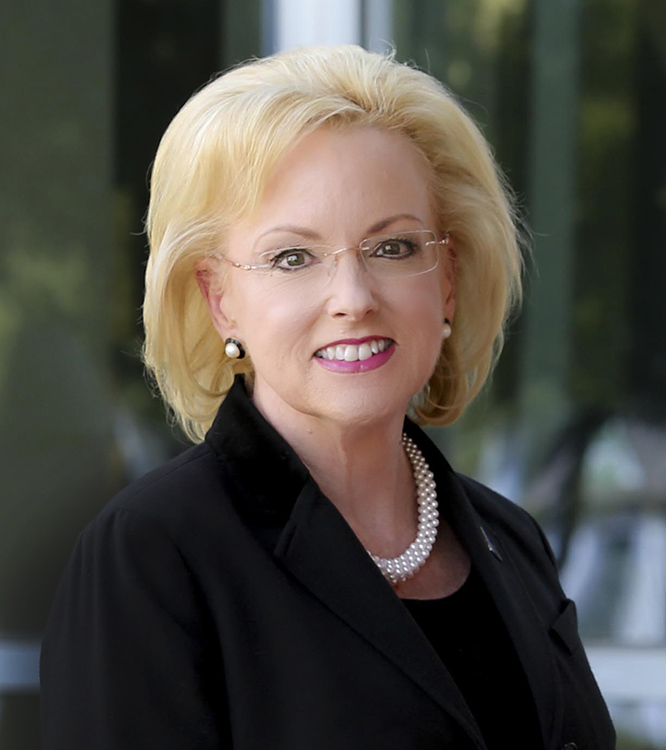The comeback from COVID begins
Ambiguity and adaptation may be the way of life in 2021 as COVID restrictions roll back across communities, says Scott Walters, PhD, Regents Professor at the HSC School of Public Health.
“Clearly, the comeback will be phased in waves,” Dr. Walters said. “It won’t be as easy as flipping on a switch, and that could make the return to work and other activities confusing for a while.”
“When stay-at-home guidance went into effect last year, everyone did the same thing at once, but now as businesses and organizations are reopening, we’re seeing differences in timing and expectations. People are doing very different things.”
A gray area involves masks. Some communities have lowered their mask requirements, while others are keeping them in place. Personal decision-making is playing a large role in places where they aren’t required, as people weigh their risks and degrees of comfort in different settings. While more vaccines are reaching the public than ever before, the U.S. has not yet achieved herd immunity, so health concerns still remain, especially regarding the new COVID variants discovered in recent months.
“Since I’m vaccinated, I think my personal risk is pretty low, however, I’m sticking to CDC guidance for the well-being of others around me,” Dr. Walters explained.
For many people, he said, 2021 will be a year of “making case-by-case assessments,” based on the number of people you’ll be around, the distance apart, whether outdoors or indoors, and who may be at special risk. When you don’t know everyone’s vaccine status, he recommends trying to meet “two out of three” conditions: being outside, masking and distancing. That means if you’re outside and distanced, there’s probably no need to wear a mask. Likewise, if you can’t be outside, he recommends both masking and distancing. If cases decline further, we might move to a “one out of three” rule, Dr. Walters said.
Getting back to the everyday world could indeed provide welcome support for some of the behavioral and mental health problems COVID has brought forward.
Substance use is up; mental health issues are heightened.
Drug overdose rates are about 20% higher in Texas now than they were pre-pandemic.
More people report feeling depressed.
People have gained weight. Drinking has also increased.
The reasons have been attributed to “languishing” while others call it collective “grief.” People are having a hard time finding motivation to set goals.
“Going into the shutdown, I could see a real advantage to having more flexible time to focus on my health, but I’ve discovered that with my old set schedule, I actually eat better, stay more physically active, practice stress relief activities like yoga more often, and feel more mentally alert,” Dr. Walters said. “It’s disorienting when we are working, eating, sleeping and spending all our time in the same space.”
Questions, uncertainties remain
The return to work presents a mixed bag of emotions for many people. Some are looking forward to the long-awaited opportunity to get back, while others feel anxious. A recent Wall Street Journal article predicts that many employees will continue working remotely at least part-time, as bosses and companies rethink old practices in response to the new ways of doing business that have proven successful over this last year.
“A manager’s attitude about the pandemic can play a key role in how engaged or disengaged workers are in their jobs,” the article reported.
“What people seem to have missed most are the daily chats and informal conversations that being together can provide,” Dr. Walters said.
An early 2021 Microsoft trends report showed that the number of digital meetings among U.S. businesses more than doubled in January and February and lasted 10 minutes longer on average.
The report also showed that the average Microsoft Teams user is sending 45% more chats now per week and 42% more communications after hours. There has been a 66% increase in people working on documents, and the number of emails delivered to commercial and education customers in February 2021, as compared to February 2020, is up by 40.6 billion, Microsoft noted.
“For all the downsides of the pandemic, work productivity has actually improved. The challenge now will be to find that balance between logging in virtually and getting together for those meetings and water-cooler conversations that just don’t work as well on Zoom,” Dr. Walters said. “People will still approach certain activities with caution. Travel, going to movies, dining in restaurants and attending big events may take longer to come back.”
It has been a challenge for new employees who worked through the pandemic without ever meeting their colleagues face-to-face. Singles and working adults caring for small children or elderly parents have faced other serious stresses.
Returning to life beyond COVID could also prove challenging for pets, as cats, dogs and other companions have grown accustomed to having their families with them full-time.
“The changes now will involve some give-and-take on everyone’s part,” Dr. Walters said. “The more comfortable we can all become with a little ambiguity, and try to practice good judgement, the easier it will be to phase back.”
“I’m hopeful that our shared sense of vulnerability this last year will make our work more human and give us an opportunity to transform business and how we live together for the better.”





Social media